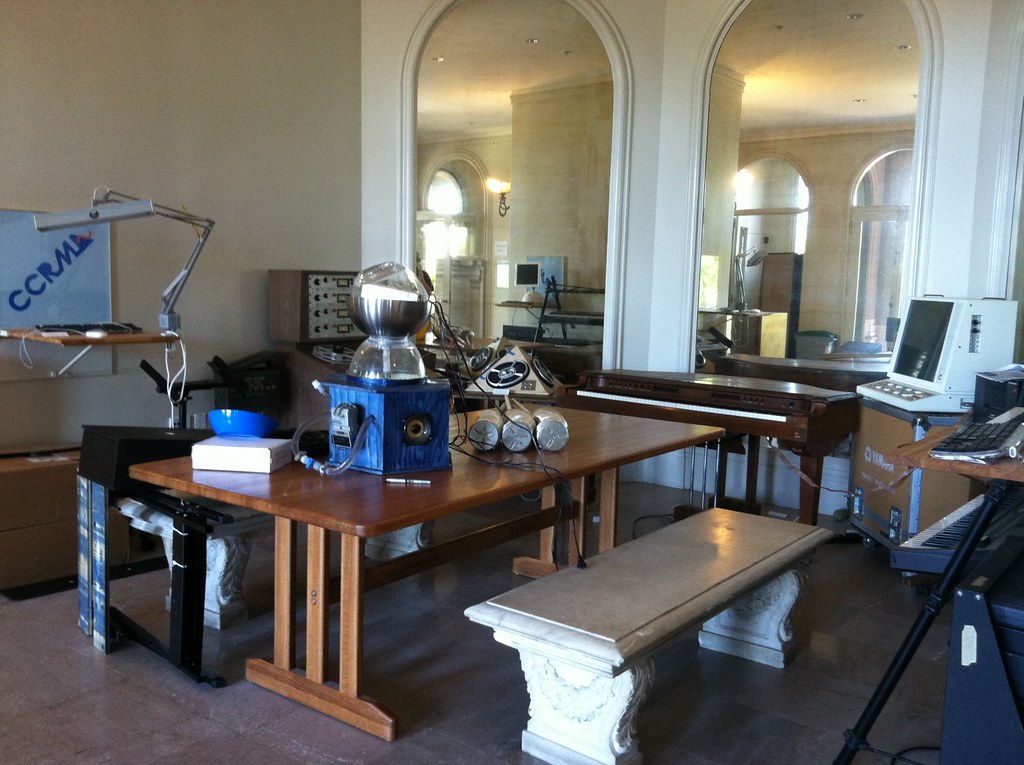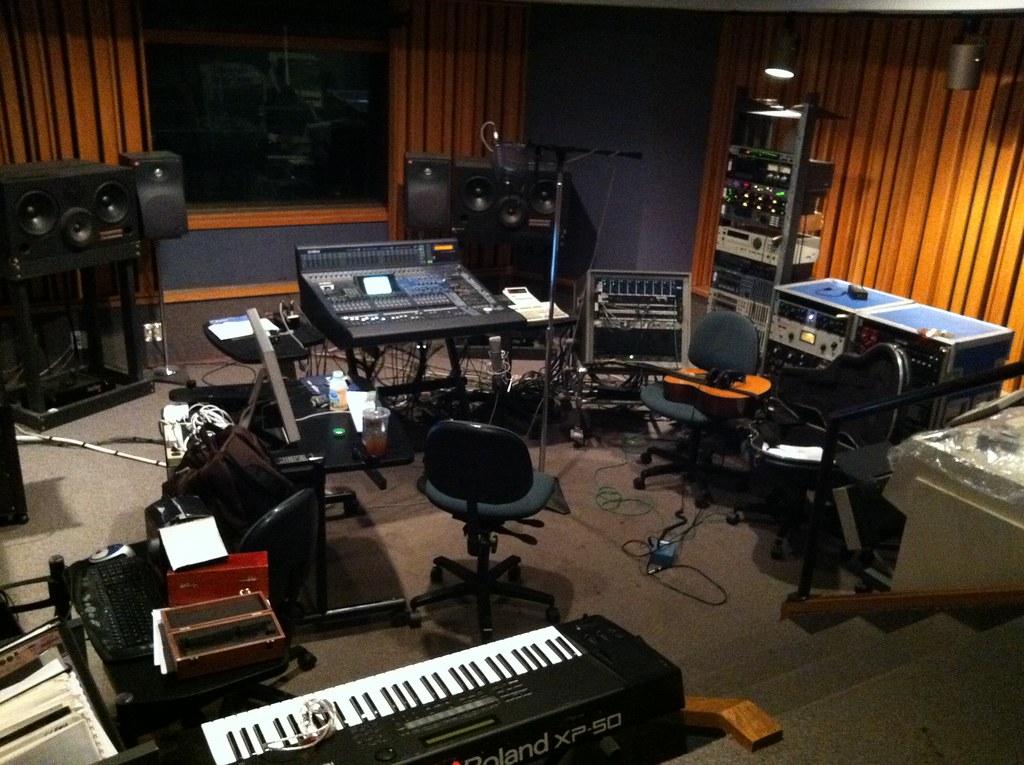20110615
 |
| Foyer Exhibit/Study Area |
While I was in California, I happened to be very close to the Stanford Campus. Stanford has a program within their music department that I have been interested in for quite a while. So I set up a tour of the building and the program,
CCRMA (Center for Computer Research in Music and Acoustics), pronounced "karma". The building was relatively empty, as this was the first day on campus after the spring graduation.
The center is located in the old governors mansion at one of the highest points on campus and has a fantastic view of the buildings below. Right as you enter the building, you know that you are in the right place. There are various keyboards, speakers, and other things I would bet are instruments, but not like any I've ever seen. There is also a reel to reel, next to a pyramid shaped speaker array, and a giant machine that appears to be one of the earliest GUI based DAWs.
 |
| Cabinet of CCRMA History |
After climbing the stairs you come across a modest lounge complete with Foosball machine and balcony taking full advantage of the amazing views. There is a small cubby showcasing some of the research that has been conducted at the center over the years. In it, there is a Balinese Gong, a metronome, a variety of xylophones, and of course Ge Wang of
SLOrk's work on the hemispherical speaker array originally developed at
PLOrk and used in
BLOrk... yes that's a lot of ORKs. Above these glorious pieces of history are complete archives of the AES Journals and a variety of other historical resources.
 |
| Control Room for Recording Studio |
During my tour I was shown a number of very interesting spaces. Everything from a private 8 channel mixing room to a ~100 person performance space with 24+ channels of spatialized and modular speakers. There is a full recording studio complete with a ProToolsHD system and most amazing of all, a "spherical" room that allows experimentation with the entire sphere of sound created by a 24 channel speaker array. This is apparently one of the most popular spaces for projects as you can begin to create "holographic" sound. (i.e. You can walk around an intangible point to act as a sound source... think
QSound on steriods). Finally, I saw a well stocked Electrical Engineering lab which contained, among other things, a familiar red box from
SparkFun.
 |
| Spherical Speaker Array Floor - Tension Grid Style |
The campus is beautiful, and spread out... it is easy for a first timer to get lost, even with a map and gps. CCRMA's building is amazingly beautiful and boasts some of the best views of campus by far. I wish there had been visitor's parking at the
top of the hill, but that's not that big of a deal. The research I heard about (including spatializing and making audible the sequences of DNA for various species of animals) all seems interesting and, most importantly, cross-disciplinary. I very much enjoyed touring these facilities and will be keeping them on my radar as new research comes out of the school.



